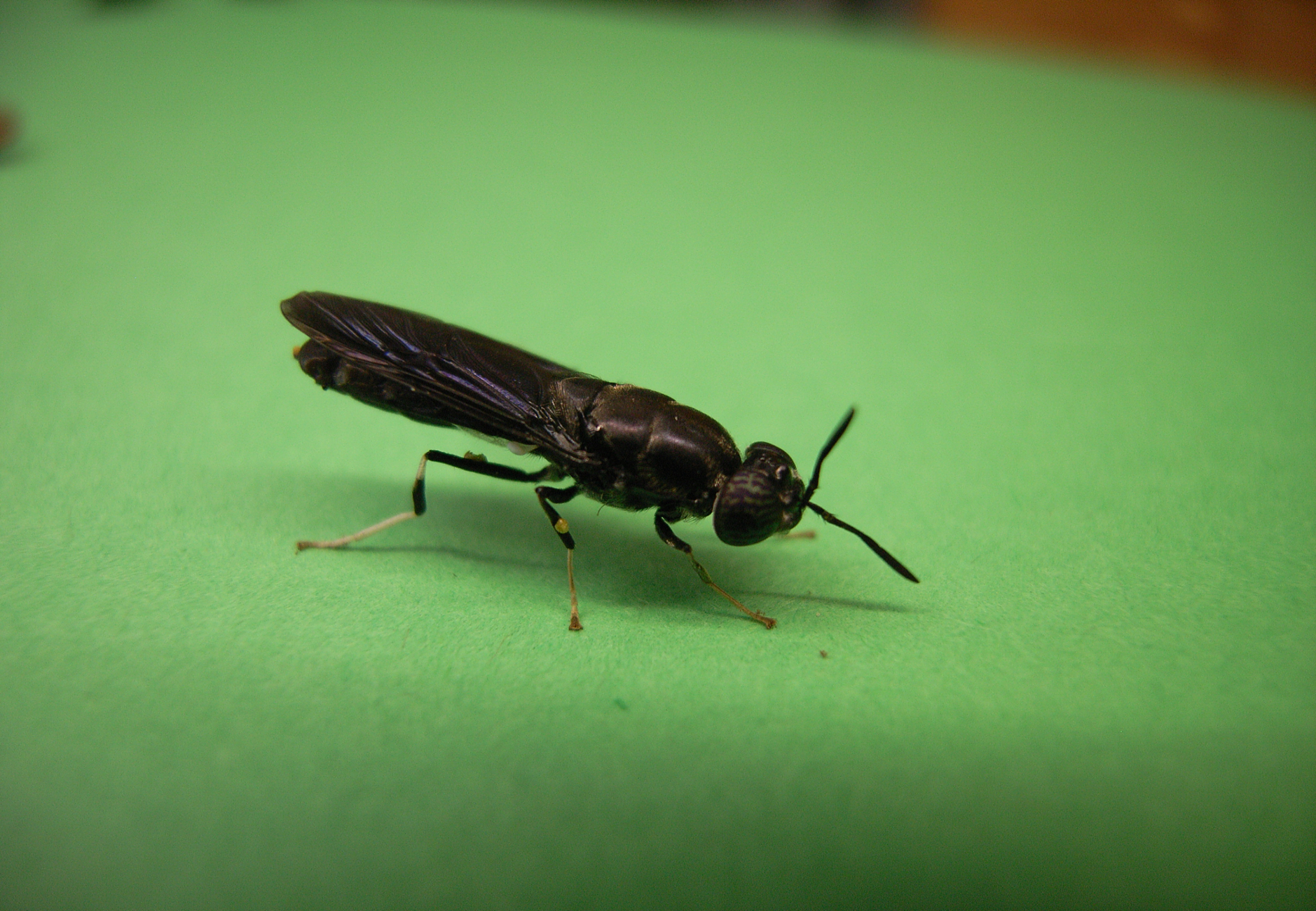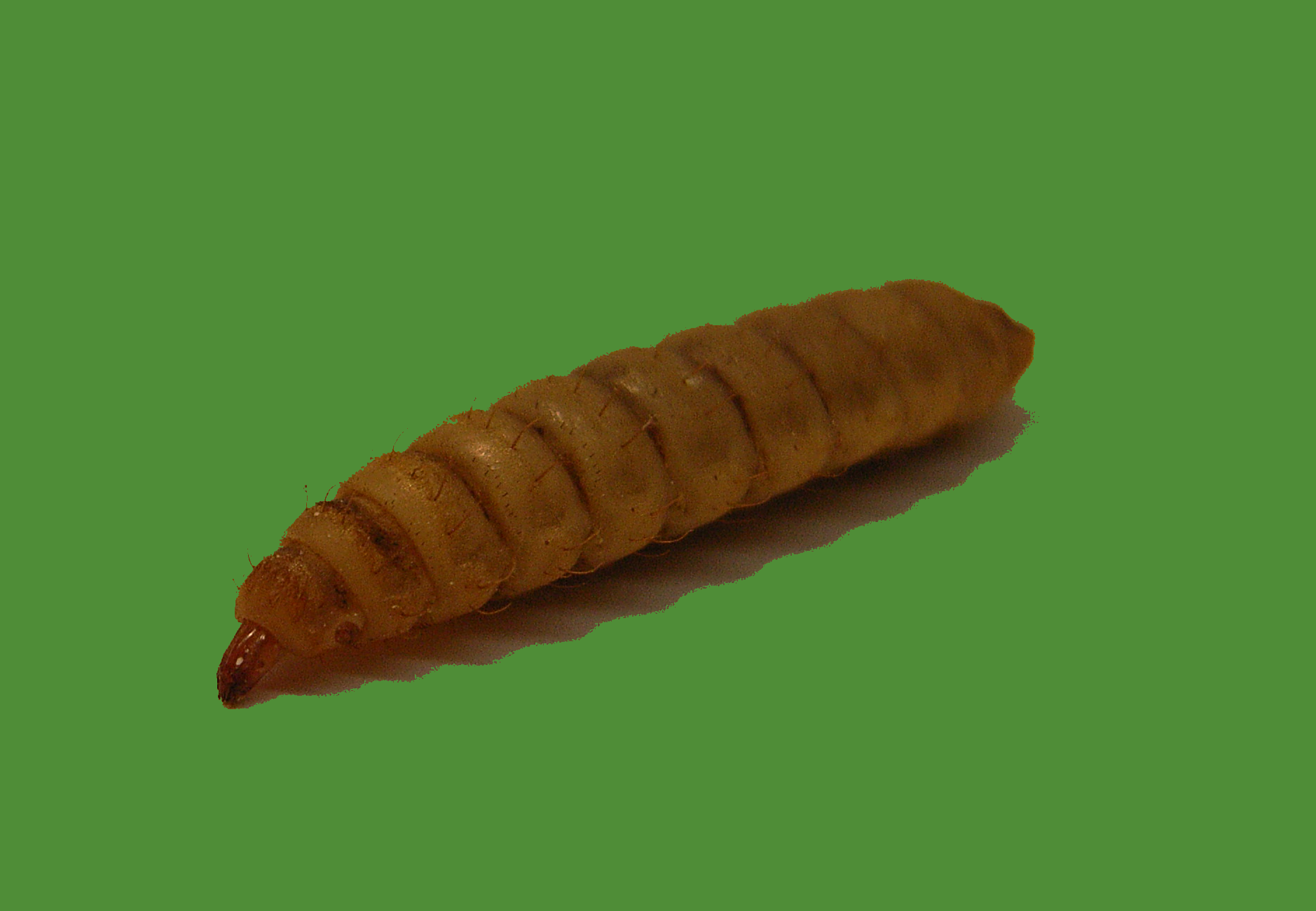Main navigation
A vision: insect biorefineries as components of a sustainable bioeconomy
Eco-friendly and responsibly manufactured products are more in demand than ever before. Specific research is being carried out into materials and applications for a wide variety of uses. Insects could provide a solution in many cases. The Fraunhofer Institute for Interfacial Engineering and Biotechnology IGB is working with Hermetia Baruth GmbH on the vision of an insect biofactory that uses waste materials to produce a wide range of products such as biosurfactants, animal feed or foils.

At first glance, the idea of producing valuable new products such as detergents or plastics from food or plant residue waste seems too good to be true. But it could happen: insects such as the black soldier fly Hermetia illucens can use a wide variety of waste residues as part of their development cycle. Chitin, protein and fat can subsequently be extracted from the insects to be used as raw materials for new products. Dr. Susanne Zibek and her team of researchers in the Industrial Biotechnology group at the Fraunhofer Institute for Interfacial Engineering and Biotechnology IGB in Stuttgart are investigating how all insect parts could be used in an insect biorefinery.
Hermetia Baruth GmbH, a company in Baruth, Brandenburg, which has specialised in the cultivation of Hermetia illucens for many years, supplies the scientists with the insects for the biofactory. "We use a three-stage process to produce the living recycling machines. It’s a bit like making schnitzel," explains Heinrich Katz, the company’s managing director. “The insects go through a typical holometabolous life cycle from egg, larva, pupa and adult fly. We produce our raw materials from young larvae that we cultivate in bioreactors and from which we subsequently extract insect skins, protein meal and insect fat. We supply these raw materials to our technology partners. I would like to emphasise that the insects we use are not pests to humans. They are also extremely frugal: adult soldier flies do not consume any food and have been proven not to transmit disease. They are able to break down and convert all biomass that does not contain lignin. The entire process chain takes place under controlled conditions.”
Chitin becomes a coating for textiles

The Fraunhofer researchers already have plenty of ideas for their vision of the insect biorefinery. They have applied for funding under the Baden-Württemberg government’s Sustainable Bioeconomy Baden-Württemberg strategy for a major project that will take a holistic view of the biofactory of the future. In parallel, research work is already being carried out at the IGB in Stuttgart, including the ChitoTex project (funded through the German Federal Ministry of Education and Research, BMBF, FKZ 031A567A), which has been ongoing for quite some time in cooperation with Protix, the German Institutes of Textile and Fibre Research Denkendorf (DITF), Textilchemie Dr. Petry GmbH, Lauffenmühle GmbH & Co. KG and the Norwegian University of Life Sciences (NMBU). This project is exploring the possibility of using insect skins for a broad range of materials and applications. The researchers have already been able to extract highly pure chitin, which is one of the most common natural polysaccharides, and chitosan from larval exoskeletons and pupal exuvia (nymphal shell that remains after an insect has sloughed) for use in the textile industry. “We have already tested chitosan for its suitability as a sizing agent in the weaving industry,” reports Zibek. “Sizing is the temporary coating of yarn before it is processed in weaving machines. The coating prevents friction and stops the yarn breaking. The sizing agent needs to be washed off again. But we’ve also had the idea of using modified chitosan as a permanent coating for textiles. With its hydrophobic matrix, it is water- and dirt-repellent and could be a good alternative to the perfluorinated hydrocarbons that are currently used in rainwear and work clothing.”
Chitosan also has the potential to be applied in the field of medicine, for example for functionalising wound dressings, or in the field of food technology for preserving fruit. “We are in the middle of the testing phase and are very ambitious,” says the scientist.
Food for humans and animals from insect protein
Another material flow that can be obtained from the insect biorefinery is proteins. The proteins from insect larvae contain, amongst other things, all essential amino acids and are suitable for a wide variety of applications. “Insect proteins have huge potential to be used as animal feed,” says Katz. “However, we have to comply with very strict EU regulations, which is one of my daily battles.” The researchers can only use insects that have been fed on residues from plant substrates and foods such as dairy products and eggs. Feeding the insects with spoiled meat and fish, food waste in general, slaughterhouse waste or manure is prohibited, although this would be an extremely good way of recycling waste. Despite compliance with existing legal requirements, insect protein is currently only approved as animal feed for pets and aquaculture. It has not yet been approved for pigs and poultry. “We would be able to meet sustainability requirements if we were simply allowed to recycle more waste. It would also be extremely economical. We have to drive this forward,” says Katz who is currently planning a large insect factory with a capacity of around 80 billion larvae.
"Insect protein is a very sustainable source of protein because it can be produced locally and requires relatively low amounts of water and pesticides, amongst other things," says Katz. “However, the protein is not of vegetarian origin. But if we look further into the future, insects definitely have huge potential as a food source for humans. Insect burgers and energy bars are already available today. It is grotesque, however, that the rules for the food sector are much less strict than for animal feed. Nowadays, it is relatively easy to quickly implement a food item that falls under the “new food” category. But generally speaking, insects will certainly be accepted faster as a human food in non-European cultures.”
“The natural insect macromolecules are not just suitable as food,” Zibek says. “Insect protein can be processed into stable foils via cleavage and cross-linking, making it an alternative to traditional plastics and plastics made of materials such as whey or casein, which can also be used for producing food.”
Biosurfactants from insect fat
And a third insect material flow could open up a multitude of new possibilities for technical applications: insect fats. “Insect fat has an interesting composition and is a sustainable domestic source that can replace tropical oils,” says the biotechnologist. The “Allianz Biotenside” (biosurfactant alliance funded through the BMBF, funding code 031B0469A-Q), involving renowned German companies and research institutions, is investigating the potential of insect fat. The fatty acid composition of the end product can be controlled by feeding the insect larvae different substrates. “The results are very promising. Using microorganisms, we have been able to produce insect fat that can be used for making a wide variety of biosurfactants for cosmetics and detergents,” says Zibek. “This is already working quite well. We are now in the process of optimising the fermentation process.”
Insect manure for the field or the biogas plant
Finally, it would also be possible to use insect skins and other residues as fertilisers. "But it would be a pity to use them just as fertiliser,” says the scientist, going on to add: “In fact, we can actually add value to chitin. One thing we could do is simply remove and collect the skins and spread the remaining insect manure on the fields as a fertiliser. We could even use insect manure in biogas plants. Then our insect biorefinery would generate a fourth material flow.”